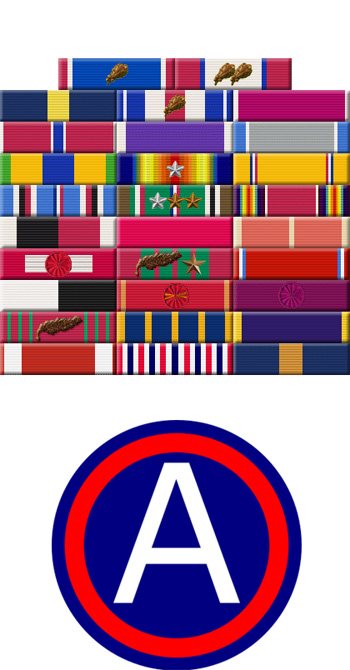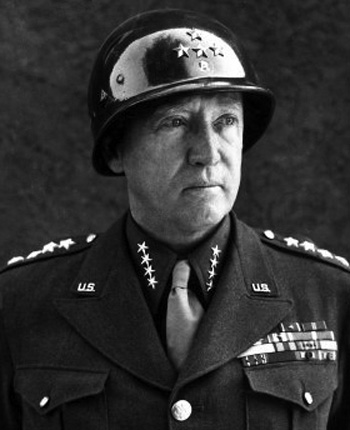
|
George S. Patton, Jr. |
 |
|||
| Rank, Service | ||||
General O-10, U.S. Army |
||||
| Veteran of: | ||||
|
||||
| Tribute: | ||||
George Patton was born on November 11, 1885, in San Gabriel, California. He attended the Virginia Military Institute for a year and then entered the U.S. Military Academy at West Point on June 16, 1904. Patton was commissioned a 2d Lt in the Cavalry on June 11, 1909, and then served with the 15th Cavalry at Fort Sheridan, Illinois. Lt Patton participated in the 1912 Summer Olympics in Stockholm, Sweden, where he came in 5th place (out of 37 contestants) in the first modern pentathlon, and then served as the Army's youngest Master of the Sword at the Mounted Service School at Fort Riley, Kansas, where he designed the Model 1913 Cavalry Saber. His next assignment was with the 8th Cavalry Regiment at Fort Bliss, Texas, where he served as aide to Gen John J. Pershing during the Mexican Punitive Expedition in 1916. During this time he conducted the world's first armored vehicle attack. Capt Patton next accompanied Gen Pershing to France at the outbreak of World War I, where he served with the United States Tank Corps and participated in the Battle of Saint-Mihiel in September 1918. Between the World Wars, he served two tours in Hawaii, a tour of duty in the Office of the Chief of Cavalry, three tours of duty with the 3rd Cavalry at Fort Myer, Virginia, and he attended Command and General Staff School and the Army War College. Gen Patton served as commander of the 2nd Armored Brigade of the 2nd Armored Division at Fort Benning, Georgia, from July to October 1940, followed by service as assistant commander of the 2nd Armored Division until April 1941, when he was made commander of the 2nd Armored Division. He moved with his Division to the Desert Training Center in California, in April 1942, and then took command of 1 Armored Corps, deploying to Morocco for the invasion of North Africa as commander of the Western Task Force in November 1942. Gen Patton became commander of II Corps in March 1943 and then took command of the U.S. 7th Army in July 1943, participating in the invasion of Sicily the same month. He took command of the U.S. 3rd Army in July 1944, commanding it through the surrender of Germany in May 1945, and into the Occupation of Germany until October 1945. During this time he also served as Military Governor of Bavaria. Gen Patton was involved in an automobile accident on December 9, 1945, and he died of his injuries on December 21 in Heidelberg, Germany. George Patton was buried at the American Military Cemetery in Hamm, Luxembourg. |
||||
|
||||

